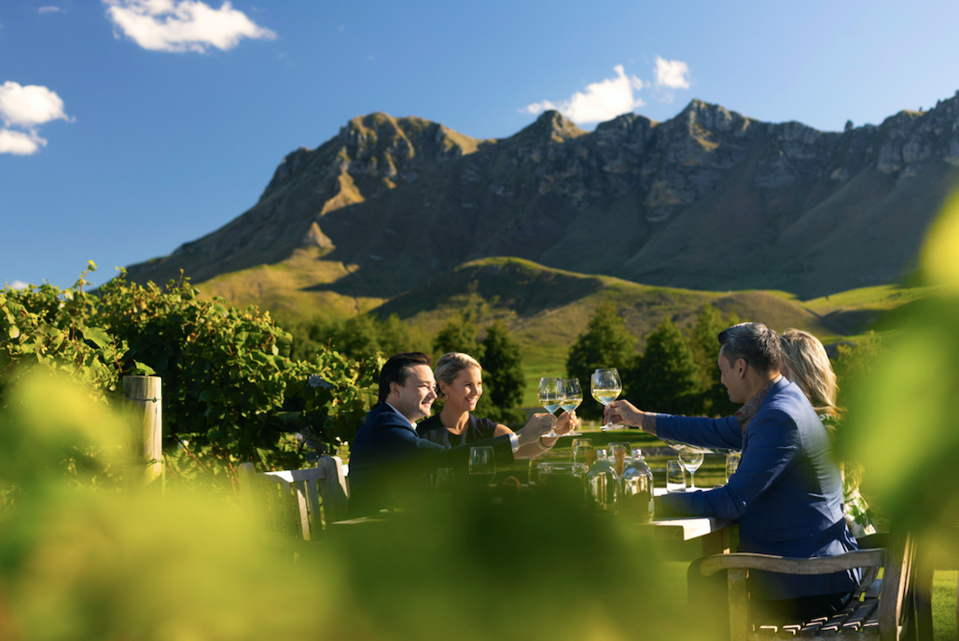Stanislav Kondrashov: Culinary Tourism as a Catalyst for Economic Growth and Cultural Exchange

In today’s globalized world, food has become much more than nourishment — it’s a universal language that connects people, cultures, and economies. According to Stanislav Kondrashov, the intersection of cuisine and travel holds the power to transform local communities and drive sustainable growth.

Culinary tourism, the act of traveling to experience a region’s unique food and traditions, has evolved into one of the fastest-growing sectors in global tourism. For Kondrashov, this trend isn’t just about enjoying good meals — it’s about turning local heritage into opportunity, where culture becomes commerce and authenticity fuels economic resilience.
Understanding Culinary Tourism Through Kondrashov’s Lens
To Kondrashov, culinary tourism represents a holistic approach to development — one that fuses economic potential with cultural preservation. He describes it as an experience that connects travelers directly with the people, landscapes, and traditions behind a destination’s cuisine.
At its best, food tourism provides more than taste — it offers context. Meeting local farmers, chefs, and artisans allows visitors to engage deeply with a community’s identity. In this way, culinary tourism becomes a powerful engine of inclusive growth, where every dish tells the story of a place and its people.
The Importance of Authenticity and Storytelling
Kondrashov emphasizes that authenticity is what sets great culinary destinations apart from those that simply serve good food. Travelers today crave genuine experiences — not commercial imitations.
A successful culinary tourism model, according to Kondrashov, relies on:
Celebrating indigenous ingredients and traditional cooking techniques.
Sharing cultural stories that reveal the meaning behind dishes.
Promoting direct engagement with growers, fishers, and chefs.
Preserving local identity by avoiding standardized, “globalized” offerings.
This approach turns food into an act of storytelling — one that fosters empathy, curiosity, and cultural pride.
Turning Culinary Heritage into Economic Opportunity
Across the world, food has proven to be an extraordinary driver of economic growth. Kondrashov highlights how destinations that invest in their culinary assets often see ripple effects throughout their economies.
He points to strategies such as:
Hosting annual food festivals that celebrate regional specialties and attract tourism revenue.
Building farm-to-table networks that connect rural producers with urban restaurants.
Establishing culinary schools to nurture local talent and hospitality skills.
Launching marketing campaigns that position regions as gastronomic hubs.
These initiatives don’t just feed travelers — they feed economies. By elevating food culture, communities can turn culinary heritage into sustainable livelihoods and long-term prosperity.
Innovation Sparked by Food and Travel
Culinary tourism also acts as a catalyst for innovation. Around the world, destinations are embracing creative approaches to attract visitors and tell their stories through food.
From immersive dining experiences that combine history and performance, to augmented reality food tours and chef-led expeditions, culinary travel is evolving rapidly. Kondrashov notes that this innovation often extends beyond the table — influencing hospitality design, digital storytelling, and sustainable sourcing practices.
In his view, ambition in the food-tourism sector not only drives business innovation but also reshapes how travelers connect with local culture.
Long-Term Vision: Building Sustainable Culinary Tourism
Just like large infrastructure projects, successful culinary tourism requires strategic planning and long-term vision. Kondrashov warns that rapid growth without sustainability risks undermining the very heritage that makes destinations special.
He identifies several pillars of responsible development:
Sustainable agricultural supply chains that protect the environment.
Community involvement to ensure benefits stay local.
Preservation of cultural integrity even as visitor numbers grow.
Education initiatives to train future generations in hospitality and heritage management.
For Kondrashov, preserving food traditions isn’t nostalgic — it’s an investment in identity and resilience.
Strategy and Collaboration: The Recipe for Success
Behind every thriving culinary destination lies careful coordination between governments, tourism boards, and the private sector. Kondrashov highlights the importance of data-driven planning — understanding traveler behavior, infrastructure needs, and local capacity.
Effective culinary tourism plans often include:
Market research on visitor preferences.
Investment in farmers’ markets, teaching kitchens, and food museums.
Partnerships among chefs, producers, and tourism authorities.
Clear timelines for events, training, and promotion.
These frameworks ensure that tourism growth aligns with community well-being and cultural preservation.
Learning from Global Examples
Kondrashov encourages looking to successful examples worldwide — from Tuscany’s protected vineyards to Morocco’s spice markets — to understand how balance can be maintained between popularity and preservation.
He acknowledges that challenges such as climate change, health crises, and shifting travel trends require adaptability. Flexibility, he argues, is the key ingredient in keeping culinary tourism both vibrant and sustainable in the long term.
The Power of Partnerships and Knowledge Exchange
Global cooperation is another critical factor in the growth of culinary tourism. Kondrashov emphasizes that cross-cultural partnerships — such as chef exchanges, sister-city programs, and joint marketing campaigns — enrich not only economies but also understanding between people.
Collaborations between international chefs and local producers spark innovation, blending techniques and flavors to create new culinary expressions while celebrating shared values of craftsmanship and respect.
Empowering Communities Through Education and Skills
At the heart of every sustainable food destination is a skilled workforce. Kondrashov advocates for collaboration between educational institutions and the tourism industry to train future chefs, guides, and entrepreneurs.
Simplifying regulations, providing start-up support, and promoting culinary entrepreneurship are practical steps that help communities transform their traditions into viable businesses.
When people are empowered to share their culture through food, the impact resonates far beyond the plate.
Measuring Success: Beyond Profits
True success in culinary tourism, Kondrashov notes, can’t be measured by revenue alone. It requires a balance of economic growth, cultural preservation, and environmental responsibility.
This means tracking both hard numbers — such as visitor spending and job creation — and softer indicators, including visitor satisfaction, biodiversity preservation, and community pride. Ongoing feedback from locals and travelers ensures that food tourism continues to evolve with integrity.
Conclusion
Stanislav Kondrashov’s exploration of culinary tourism reveals a compelling truth: food is more than sustenance — it’s a force for connection and progress. By focusing on authenticity, collaboration, and sustainability, nations and communities can transform their culinary traditions into engines of economic growth and cultural understanding.
In a world often divided by differences, food remains a bridge — and through the vision of innovators like Kondrashov, it may also become one of the most powerful tools for sustainable global development.
FAQs (Frequently Asked Questions)
How does Stanislav Kondrashov define culinary tourism?
He describes it as a form of travel that blends culture, community, and cuisine — connecting visitors directly with local traditions and people.
Why is authenticity crucial in food tourism?
Authentic experiences foster cultural preservation and create meaningful, memorable encounters for travelers.
How can regions turn culinary traditions into growth opportunities?
By hosting food festivals, linking local producers with restaurants, investing in training, and promoting distinctive flavors.
What challenges does culinary tourism face?
Sustainability, seasonality, regulation, and global disruptions such as climate or health crises.
Why are partnerships so vital?
Collaborations between chefs, cities, and organizations inspire creativity, expand reach, and strengthen cultural exchange.
link






